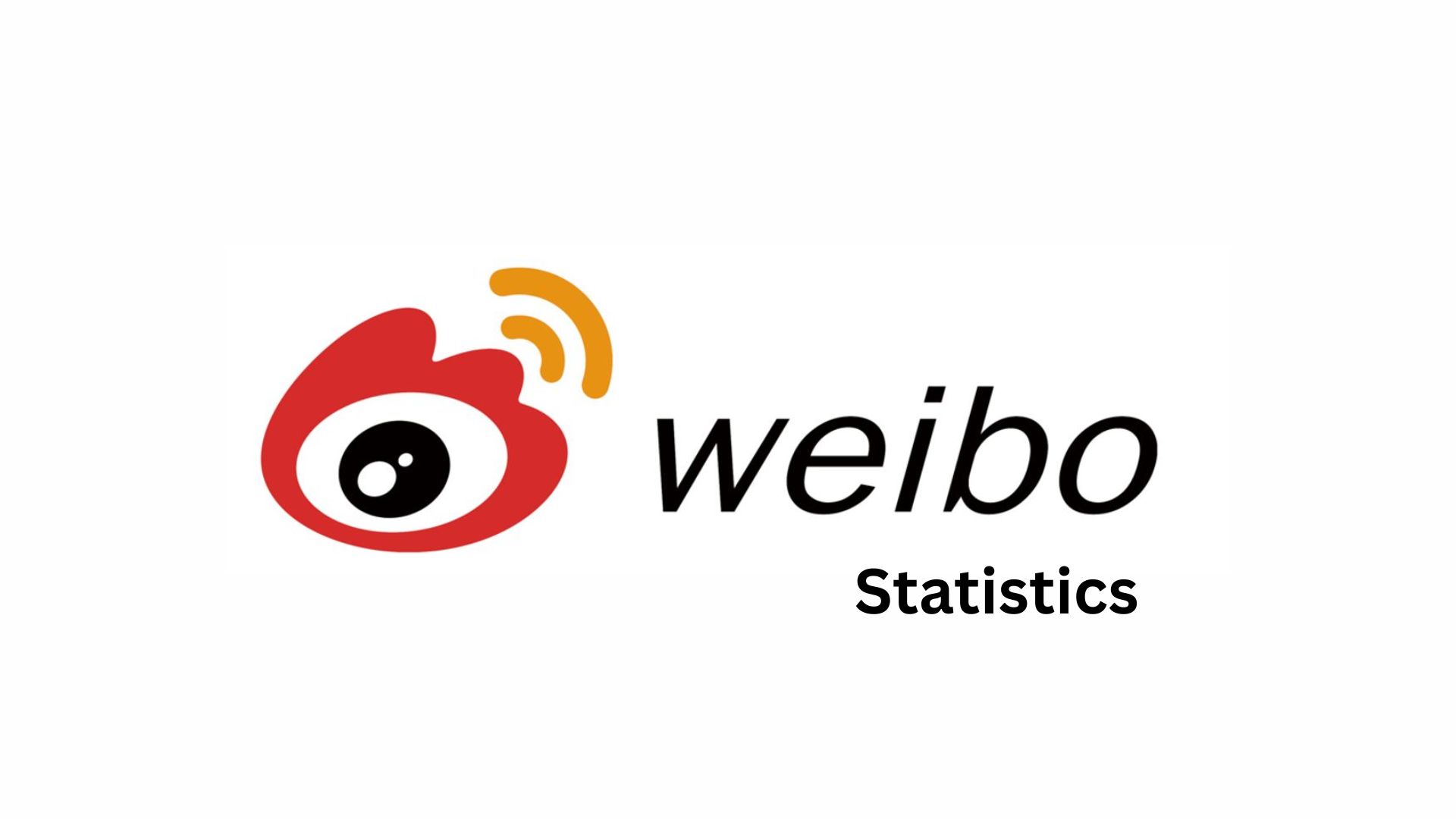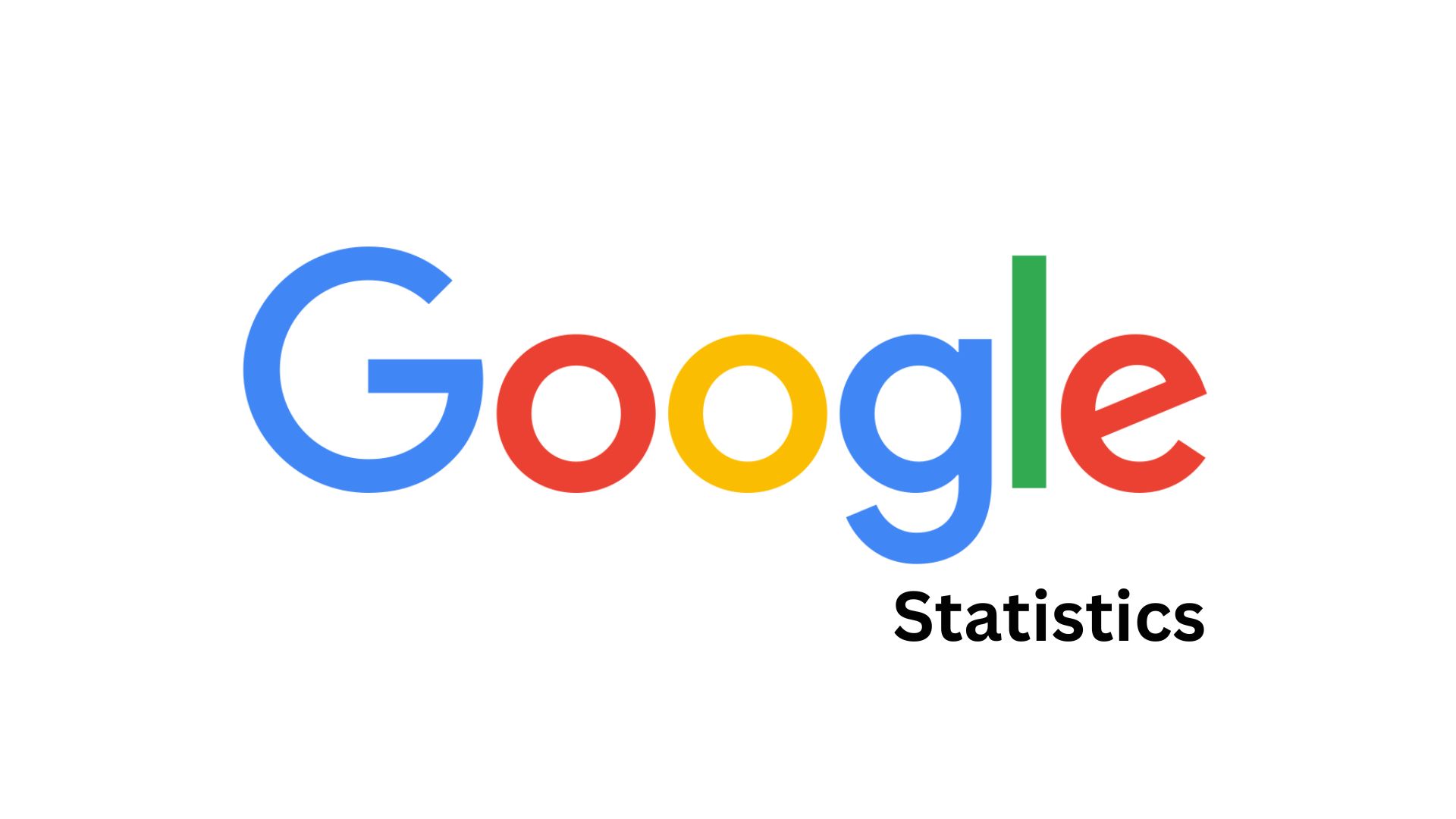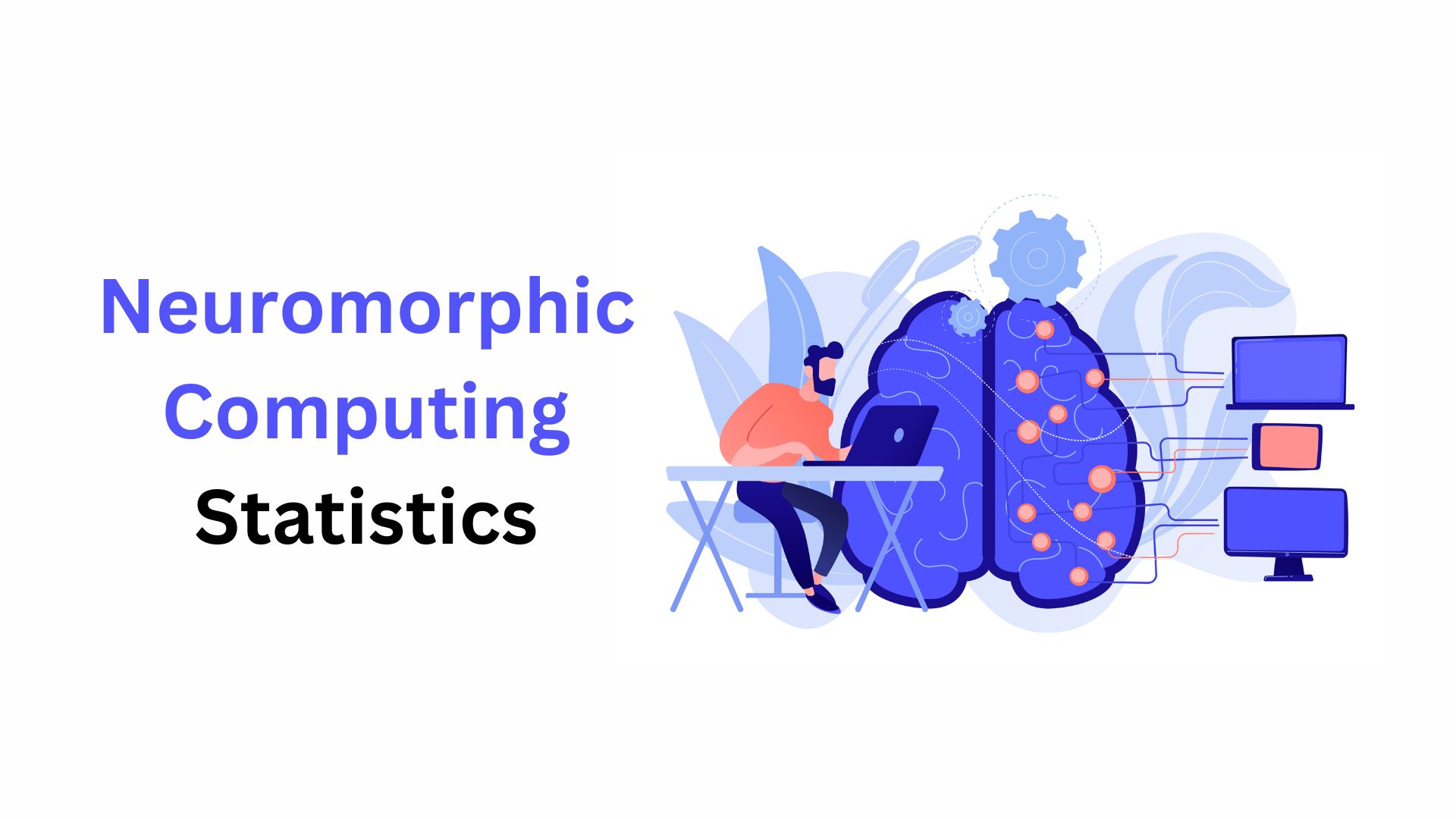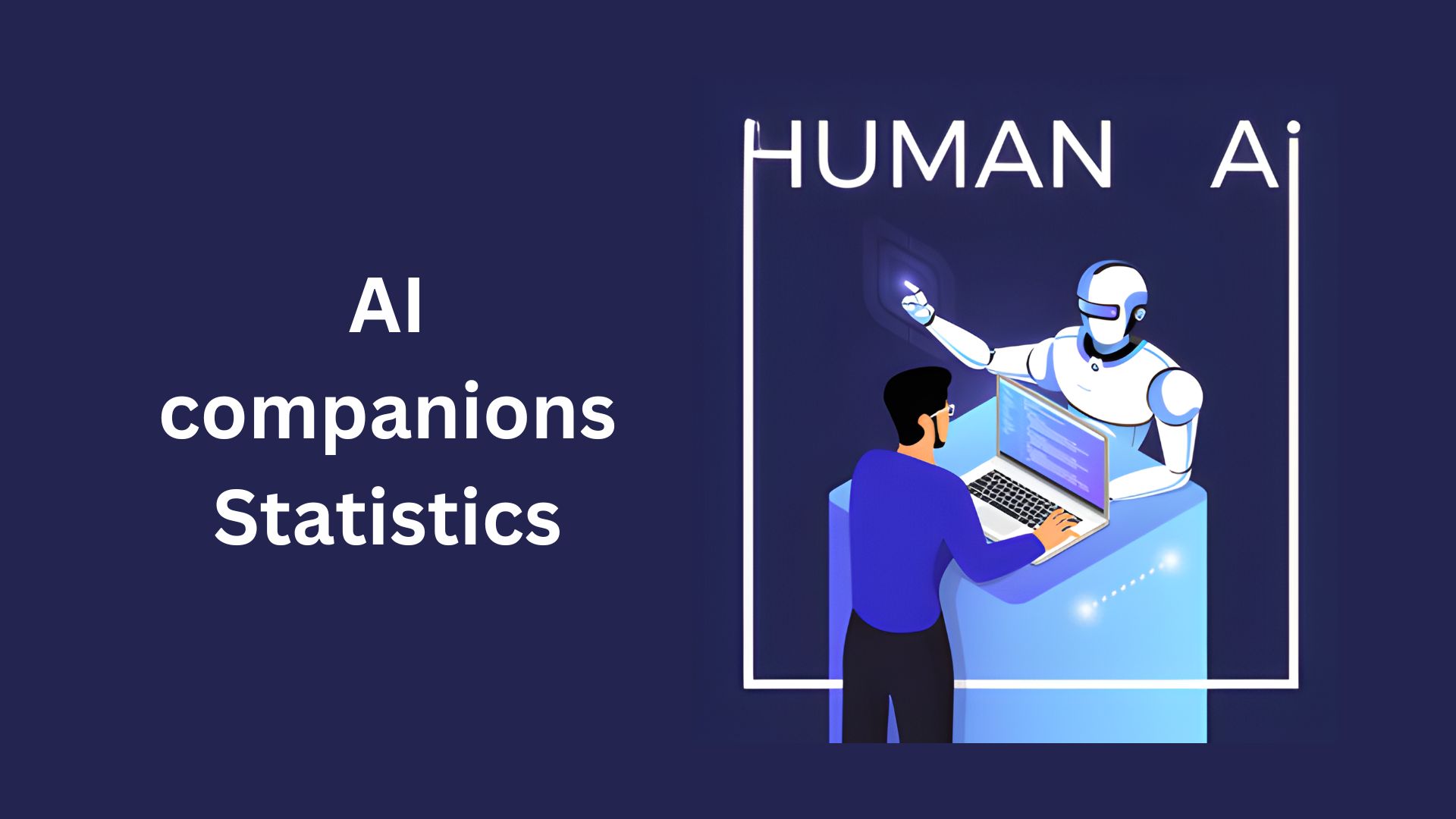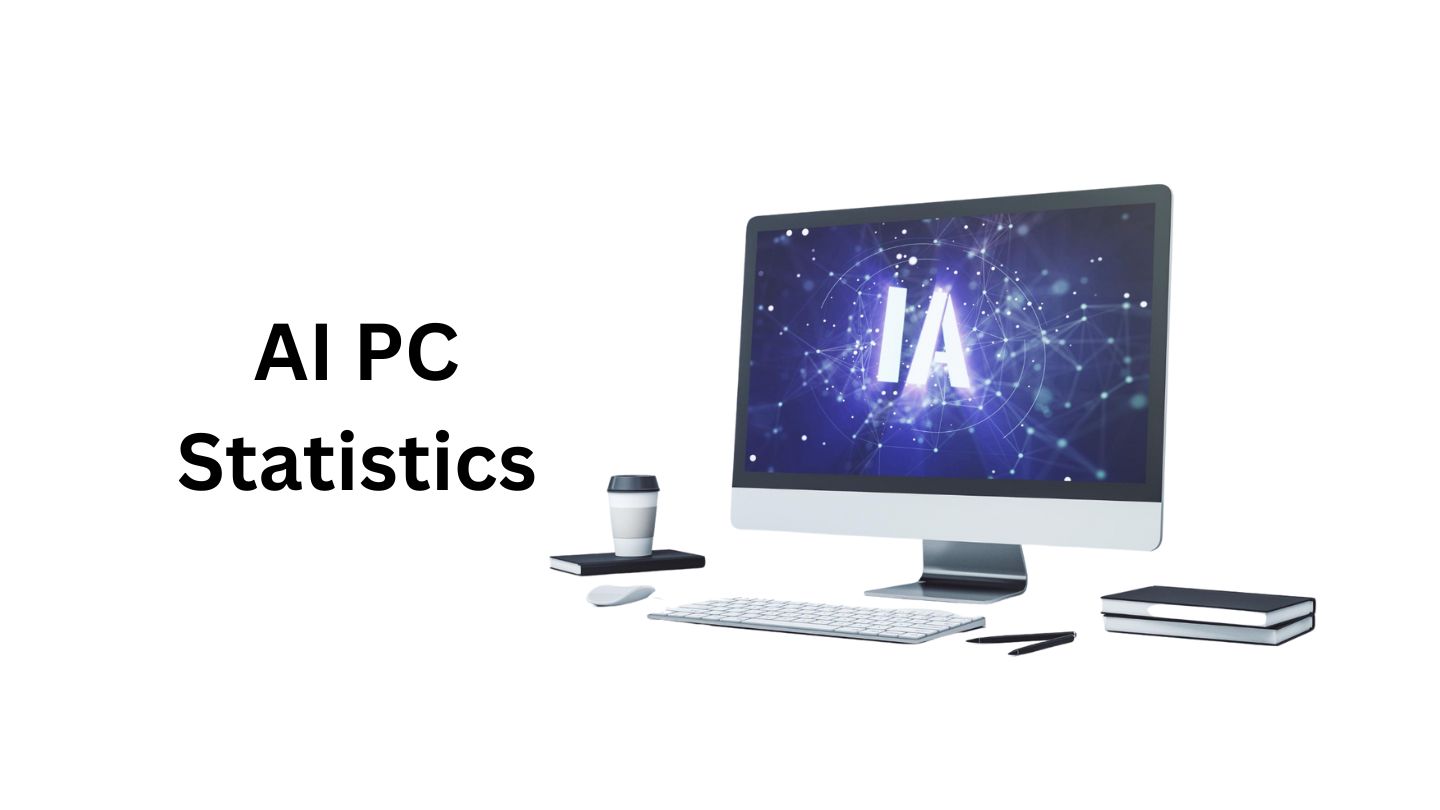Multifactor Authentication Statistics By Market, Types, Usage, Security, Adoption And Facts (2025)
Updated · Sep 28, 2025
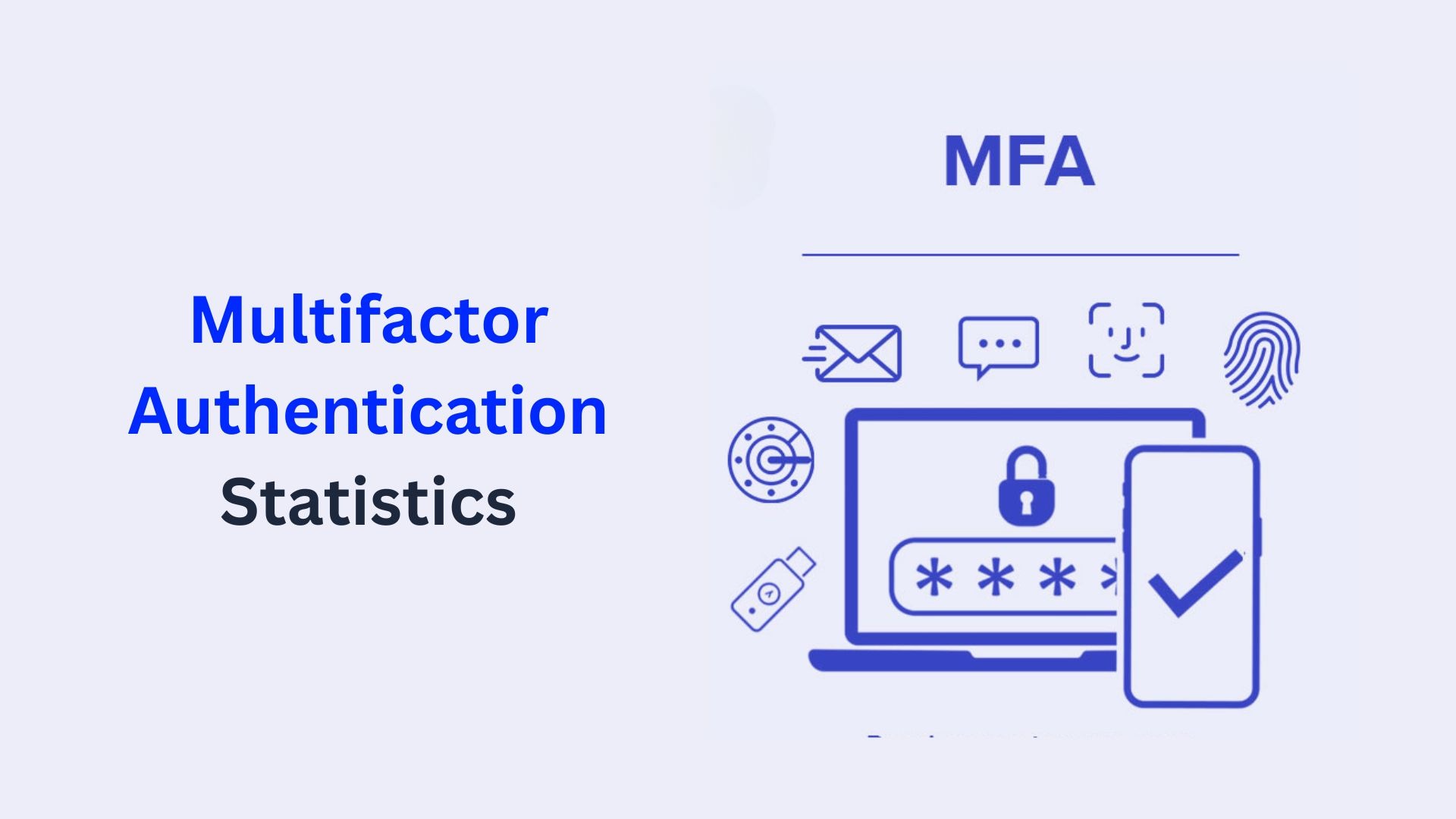
Table of Contents
- Introduction
- Editor’s Choice
- General Statistics
- Multifactor Authentication Market Statistics
- By Types
- By Enterprise Size
- By Regional Analysis
- Most Common Methods by Usage Statistics
- Multi-Factor Authentication Adoption Statistics
- By Industry
- Multifactor Authentication Organization Usage Statistics
- By Type
- Multifactor Authentication Security Statistics
- Multi-Factor Authentication Software Statistics
- By Consumer And Employee Insights
- Password Security Issues Driving Multifactor Authentication Demand Statistics
- Recent Developments
- Conclusion
Introduction
Multifactor Authentication Statistics: As more people and businesses use digital services, keeping online accounts and personal data safe has become very important. Multifactor Authentication (MFA) is a key security method that asks users to confirm their identity in more than one way before logging in.
The extra step makes it harder for hackers to break in, lowers the chances of data breaches, and improves overall cybersecurity. Looking at how MFA is used, how effective it is, and current trends helps show how individuals and organizations protect their digital information.
This article on Multifactor Authentication Statistics covered all the latest analyses and current data from several different insights, including global usage, adoption by different industries, and its other importance in online security.
Editor’s Choice
- A scoop.market.us shows that the MFA market is projected to see continuous expansion, resulting in USD 19.4 billion by 2025.
- In 2025, password-based authentication is projected to generate approximately USD 11.3 billion in revenue, while password-less authentication is expected to bring in around USD 8.1 billion.
- In the same duration, the global MFA market, large enterprises lead with a 64% share.
- In the technology industry, Multi-Factor Authentication Adoption is very high at 87%.
- According to a report published by Exploding Topics, more than 50% of IT professionals rely on time-based one-time passwords for MFA.
- SMS-based time-based one-time passwords (TOTPs) are the most widely used, with 55.96% of respondents relying on them.
- About 25% of companies started using MFA after experiencing a cybersecurity breach.
- Over half of small businesses are unaware of what MFA is.
- In just one year, Germany saw MFA adoption grow by more than 1.5 times.
- Around one-third of consumers avoid MFA because they find it inconvenient.
- Almost 50% of IT and cybersecurity leaders believe MFA could eventually replace passwords.
- A global study by LastPass, covering over 47,000 organizations using its password management services, found that 57% of companies now use MFA.
- Moreover, 73% of people like to use their smartphones for multi-factor authentication.
General Statistics
- JumpCloud’s 2024 IT Trends Report shows 83% of organisations still use passwords, 83% also use MFA, and 66% require biometrics, though 67% of IT professionals feel extra security adds complexity.
- On average, employees manage three to five passwords, while 15% handle ten or more for IT access.
- Microsoft reports that over 1,000 password attacks occur every second, and over 99.9% of hacked accounts did not enable MFA.
- More than half of users support MFA, with 67% in the UK saying it shows companies care about protecting data.
- KnowBe4 research shows 62% of small to mid-sized firms skip MFA, compared to 38% of large firms.
- As of 2025, only 45% of MFA systems will use biometrics like fingerprints or facial recognition for better security.
- By the end of 2026, 40% will adopt AI-driven behavioural analytics to detect unusual activity.
Multifactor Authentication Market Statistics
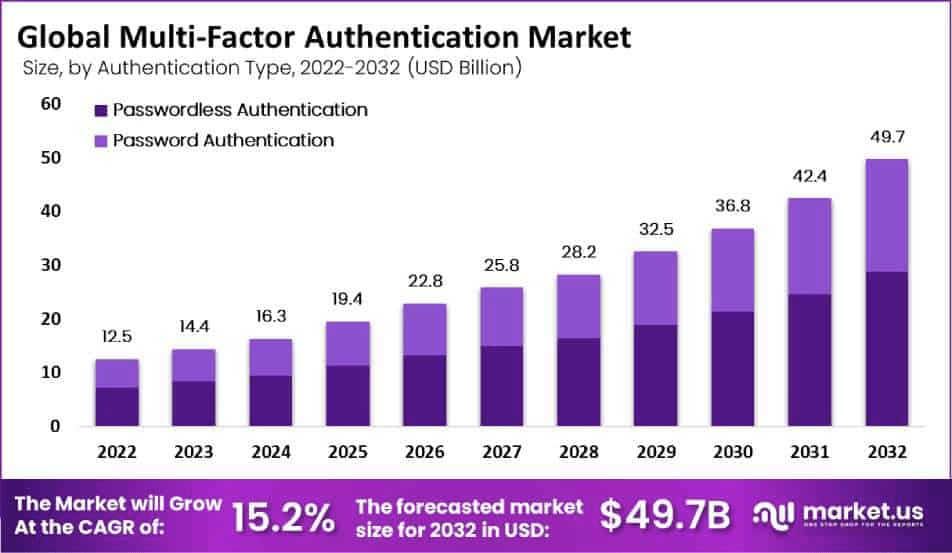
- As of 2024, the global market size of Multi-Factor Authentication (MFA) has grown to around USD 16.3 billion, an increase from USD 14.4 billion in 2023.
- The MFA market is expected to grow steadily over the next several years, with revenues reaching around USD 19.4 billion in 2025, followed by USD 22.8 billion by 2026, USD 25.8 billion by 2027, USD 28.2 billion by 2028, and USD 32.5 billion by 2029.
- In contrast, the market is projected to expand approximately USD 36.8 billion by 2030, USD 42.4 billion by 2031, and nearly USD 49.7 billion by 2032
- This market will grow at a 15.2% CAGR from 2022 to 2032.
By Types
- In 2025, password-based authentication is projected to generate approximately USD 11.3 billion in revenue, while password-less authentication is expected to bring in around USD 8.1 billion.
Furthermore, MFA revenue analysis in the coming years is estimated in the table below:
| Year | Password Authentication | Password-less Authentication |
| Market Size (USD billion) | ||
| 2026 | 13.2 | 9.6 |
| 2027 | 15 | 10.8 |
| 2028 | 16.4 | 11.8 |
| 2029 | 18.9 | 13.7 |
| 2030 | 21.3 | 15.5 |
| 2031 | 24.6 | 17.8 |
| 2032 | 28.8 | 20.9 |
By Enterprise Size
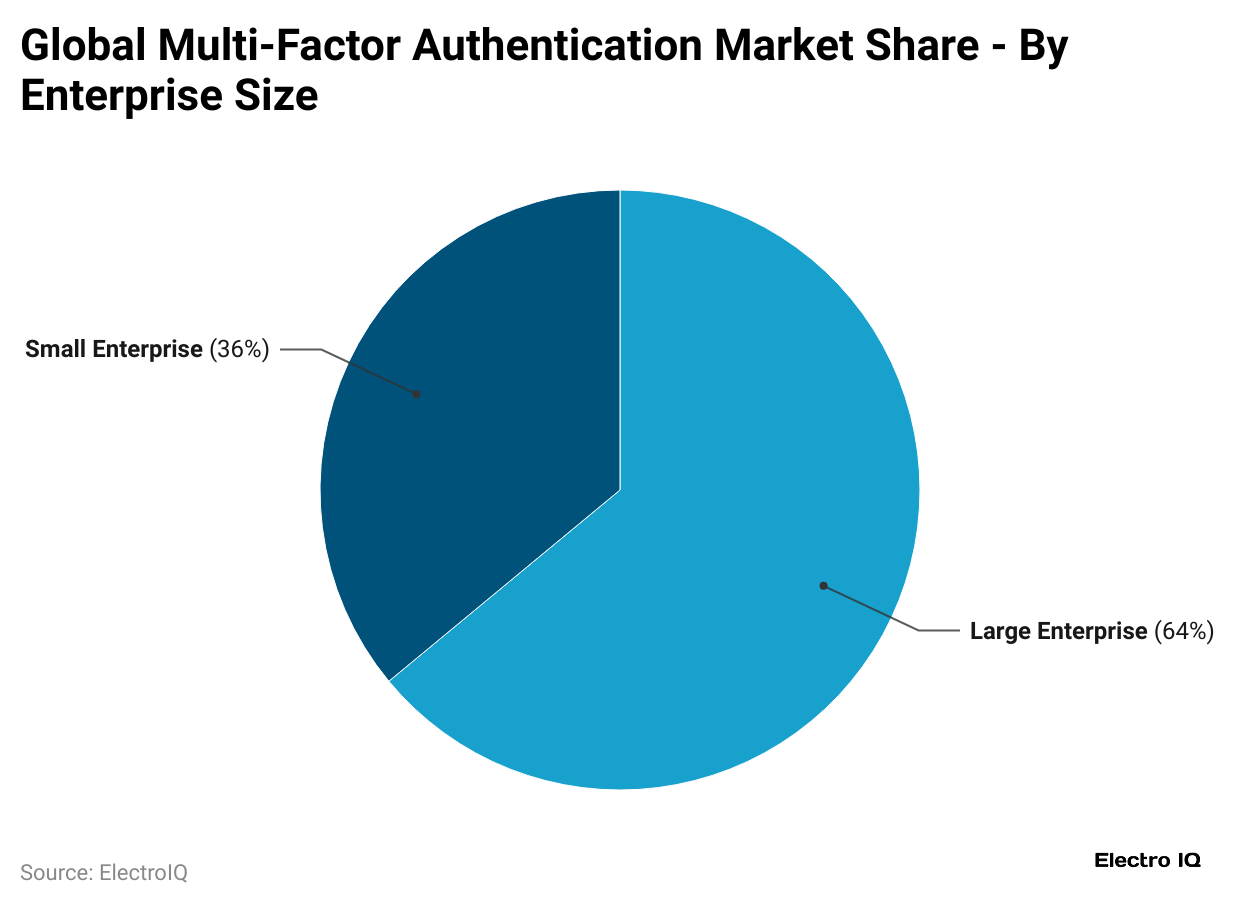
- As of 2025, in the global Multi-Factor Authentication (MFA) market, large enterprises lead with a 64% share.
- Meanwhile, small enterprises also contribute significantly, making up 36% of the market.
By Regional Analysis
- According to analysis from DataHorizon Research, the Multifactor Authentication (MFA) market in North America was valued at USD 5.2 billion in 2024.
- Besides, the region is expected to witness significant growth, reaching nearly USD 18.1 billion by 2033.
Furthermore, other regional market sizes of MFA are stated in the table below:
| Region | 2024 | 2033 |
| USD billion | ||
| Europe | 3.8 | 13.4 |
| Asia Pacific | 2.9 | 11.2 |
| Latin America | 0.8 | 3.1 |
| Middle East & Africa | 0.6 | 2.0 |
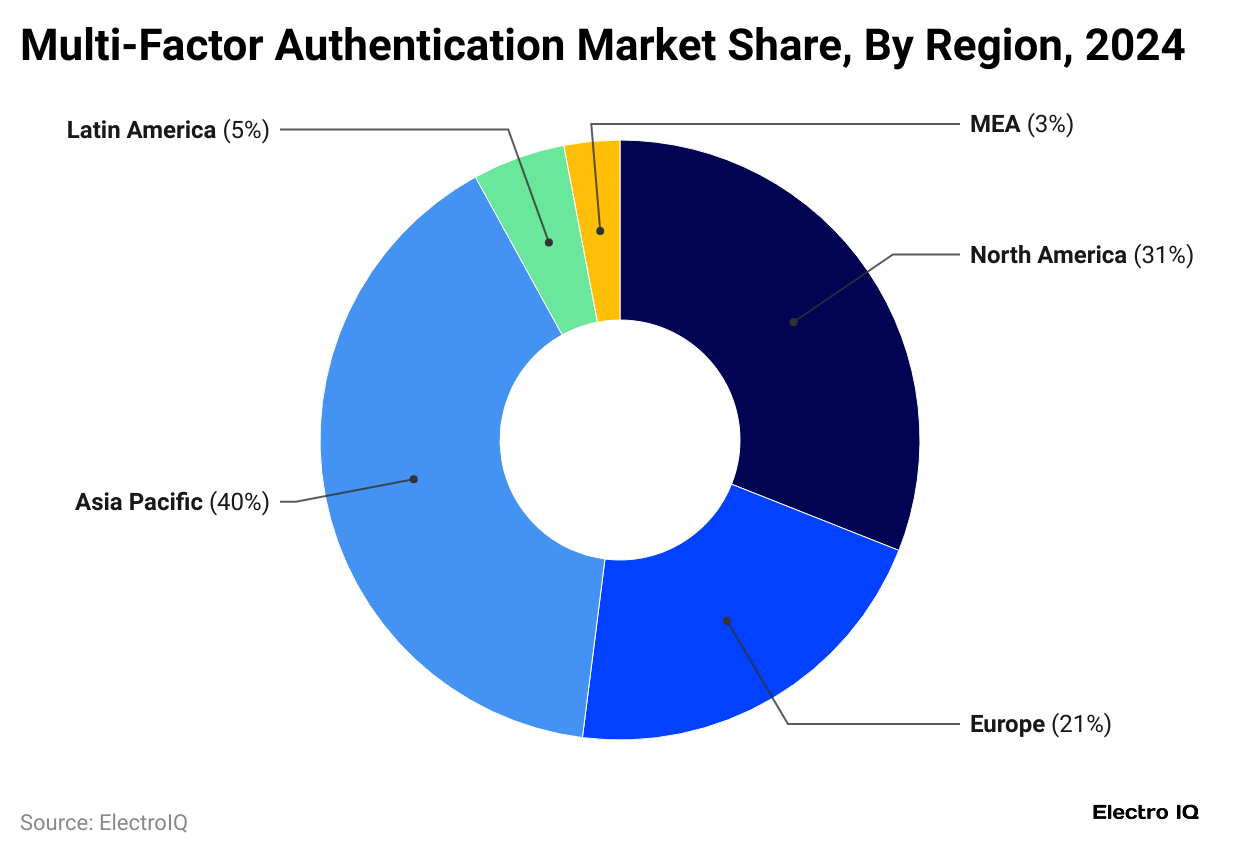
- In 2024, the global multi-factor authentication (MFA) market shows Asia Pacific leads with a 40% market share, followed by North America at 31%
- Europe holds 21% of the market, while Latin America accounts for 5%, and the Middle East & Africa (MEA) represents 3%.
Most Common Methods by Usage Statistics
- An explodingtopics.com report shows that SMS-based time-based one-time passwords (TOTPs) are the most widely used, with 55.96% of respondents relying on them.
- Email TOTPs follow closely at 51.38%, while mobile device push notifications are used by 36.7% of users.
- Non-time-based email and SMS OTPs are each adopted by 30.28% of respondents.
- Other methods include email web links (26.61%), QR codes scanned by mobile devices (26.61%), and SMS web links (25.69%).
- PC push notifications are used by 21.1%, hardware tokens by 20.18%, Fast Identity Online (FIDO) security keys by 16.51%, and FIDO mobile authenticators by 13.76%.
Multi-Factor Authentication Adoption Statistics
- According to a 2024 JumpCloud survey of over 1,000 small and medium-sized enterprise (SME) IT professionals, 83% reported requiring employees to use MFA to access all their resources.
- About 87% of large companies with more than 10,000 employees use MFA, while small and medium-sized businesses (SMBs) have an adoption rate of roughly 34% or lower.
- In contrast, a study by the Cyber Readiness Institute found that nearly two-thirds (65%) of global small and medium-sized businesses (SMBs) do not use MFA and do not plan to implement it in the near future.
- Statista Report further shows that across global organisations, about 98% use more than one method to verify user identities.
- Out of these, roughly 56% rely on one-time passwords sent via SMS, while around 51% use one-time passwords sent through email.
By Industry
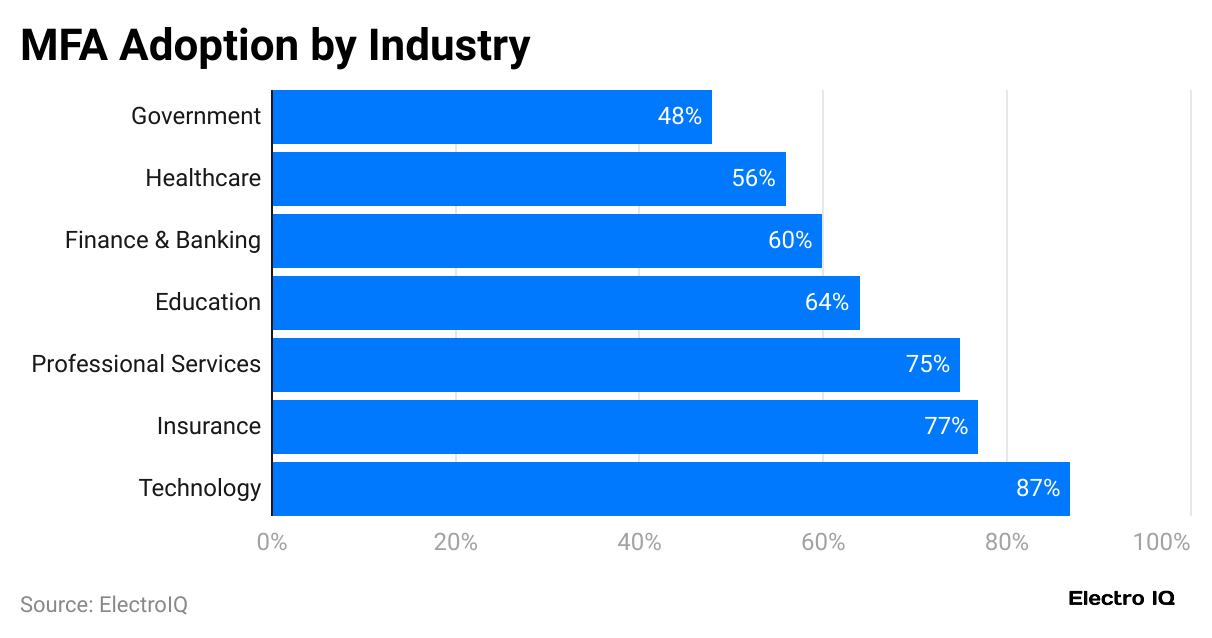
- As of 2024, in the technology industry, Multi-Factor Authentication Adoption is very high at 87%.
- The insurance sector follows with a 77% adoption rate, while professional services and education secured an adoption rate of 75% and 64%, respectively.
- In finance and banking, where strict security is essential, MFA is used by 60% of organisations.
- Healthcare and government sectors have slightly lower adoption levels, at 56% and 48%, individually.
Multifactor Authentication Organization Usage Statistics
- A global study by LastPass, covering over 47,000 organisations using its password management services, found that 57% of companies now use multifactor authentication (MFA), up 12 points from last year.
- Among employees, 95% prefer software-based MFA, mostly through mobile apps, while only 4% use hardware devices and 1% rely on biometrics like fingerprints or facial recognition.
- The most popular tools are LastPass Authenticator (39%), Duo Security (31%), and Google Authenticator (24%), with YubiKey (4%) and Microsoft Authentication (1%) also used.
- MFA adoption is higher in larger firms, with 87% of companies with over 10,000 employees, 78% for 1,001 to 10,000 workers.
- In contrast, it drops to 34% in small businesses (26 to 100 employees) and 27% in very small firms (up to 25 employees).
By Type
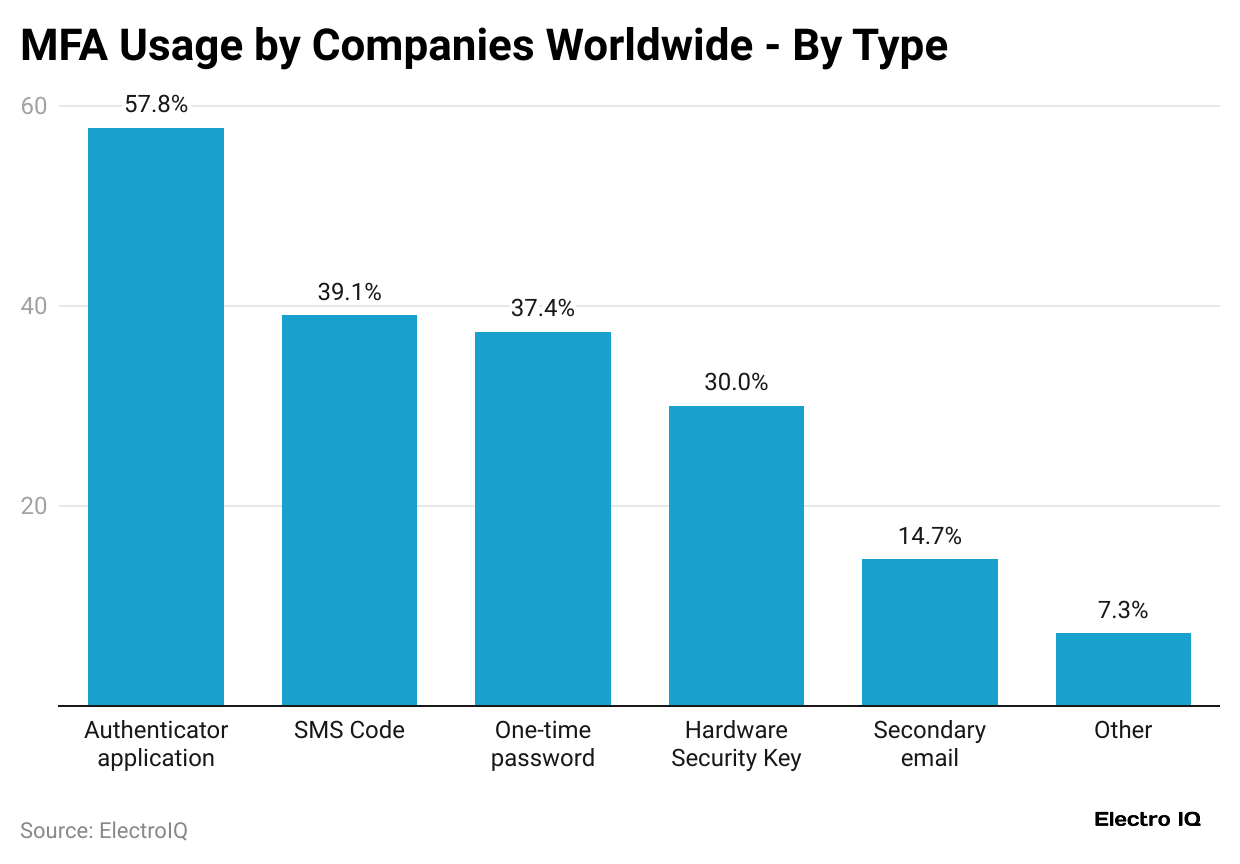
- Authenticator apps were the most common MFA method, used by 57.8% of companies for secure and flexible identity checks, and SMS codes followed at 39.1%.
- Meanwhile, One-time passwords (OTP) were chosen by 37.4%, adding time-sensitive protection, and 30% relied on hardware security keys for stronger device-based security.
- Secondary email addresses were used by 14.7% of companies, while 7.3% adopted other methods.
Multifactor Authentication Security Statistics
- Around 41% of developers are focusing on adopting two-factor authentication (2FA) as their top priority.
- In comparison, 33% aim to strengthen password security, while 12% want to improve overall user security.
- Another 12% are working to make the authentication process easier and smoother for users.
- Only a small portion, about 2%, feel that improving any form of authentication is not a priority.
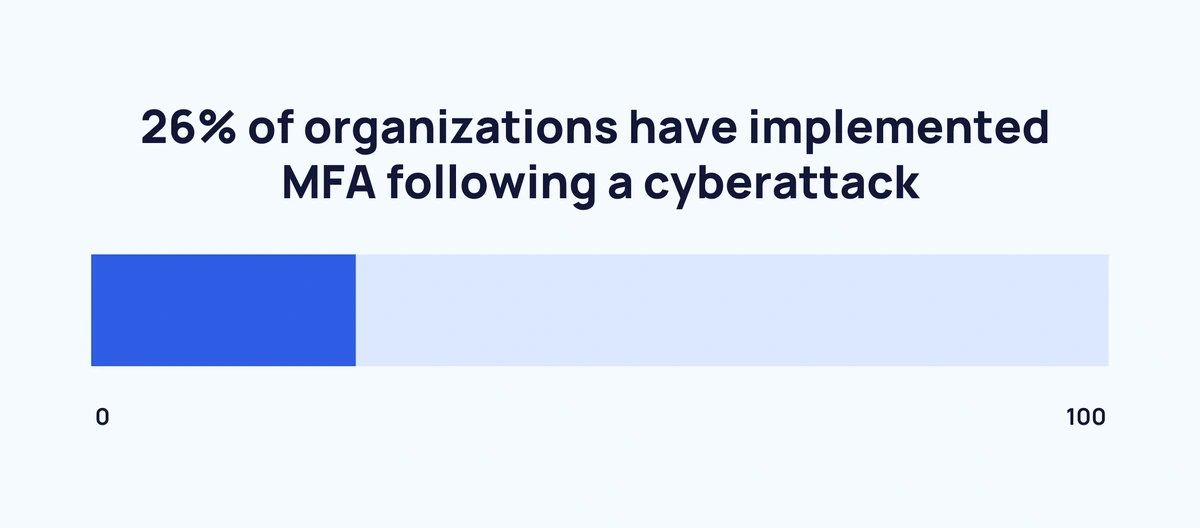
- About 26% of organisations adopted MFA after experiencing a cyberattack, showing that roughly one in four companies implement this security measure to improve protection and prevent future breaches.
- llcbuddy.com says that using multi-factor authentication (MFA) can prevent more than 99.9% of attempts to hack accounts, according to a 2025 report.
- According to Google, adding a recovery phone number to your account can block nearly all automated bots, 99% of mass phishing attempts, and about two-thirds of attacks aimed at specific targets.
Multi-Factor Authentication Software Statistics
- A jumpcloud.com report analysis further shows that 95% of employees using MFA prefer software-based methods such as mobile apps, mainly for their simplicity and convenience.
- Only 4% rely on hardware-based MFA, showing it is far less popular.
- Biometric options make up just 1% of usage, limited by higher costs, technology challenges, and less user familiarity despite strong security benefits.
By Consumer And Employee Insights
- Most people (73%) like to use their smartphones for multi-factor authentication (MFA), while only 17% prefer using a built-in authenticator.
- Almost all IT security leaders (91%) agree that MFA is very important for keeping their organisations safe.
- Additionally, most consumers (87%) believe MFA should be free.
Password Security Issues Driving Multifactor Authentication Demand Statistics
- The Workplace Password Malpractice Report shows that weak passwords remain a major security problem, with many people using simple passwords like “123456,” “qwerty,” and “password.”
- About 57% of individuals write their passwords on sticky notes, and 67% of them admit to losing these notes.
- Additionally, 62% keep passwords in physical notebooks, often left near work devices.
- Digital storage also poses risks, resulting in 49% saving work passwords in cloud documents, 51% on their computers, and 55% storing passwords on mobile phones.
Recent Developments
- In February 2024, Entersekt, a leader in financial security, achieved a milestone by receiving its 99th software technology patent from the U.S. Patent Office, strengthening its fight against financial fraud.
- In March 2024, Identiv, Inc. launched ScrambleFactor, a new advanced feature for its high-security physical access control systems (PACS).
- In January 2025, BIO-key International announced that Egypt’s largest bank, NBE, is now using its PortalGuard IAM platform for secure identity and access management.
Conclusion
After completing the article on Multifactor Authentication Statistics, it can now be easily concluded that it plays a crucial role in protecting digital accounts and sensitive data. This security system steps up an extra set-up to verify a user’s identity, which makes the process difficult for cybercriminals to access and also reduces the risk of several data breaches. Its growing adoption across different industries highlights its importance in protecting confidential information and maintaining trust online.
In recent years, as digital threats have grown continuously, implementing MFA has become an essential step for global organisations and individuals. So, this article will guide you to stay informed about best practices and current trends to ensure that digital data remains secure.
Sources
FAQ.
Common types of MFA include SMS/email codes, authenticator apps, biometrics, and hardware security tokens.
After login, the user enters their username and password, then provides a second verification, such as a code, biometric scan, security key, or SMS to confirm identity and gain account access.
Most major online services support MFA, and it is recommended to enable it wherever possible for security.
MFA adds a small extra step to login, slightly increasing time but boosting security.
If access to your MFA method is lost, use backup codes or alternate recovery options provided by the service.

Maitrayee Dey has a background in Electrical Engineering and has worked in various technical roles before transitioning to writing. Specializing in technology and Artificial Intelligence, she has served as an Academic Research Analyst and Freelance Writer, particularly focusing on education and healthcare in Australia. Maitrayee's lifelong passions for writing and painting led her to pursue a full-time writing career. She is also the creator of a cooking YouTube channel, where she shares her culinary adventures. At Smartphone Thoughts, Maitrayee brings her expertise in technology to provide in-depth smartphone reviews and app-related statistics, making complex topics easy to understand for all readers.





